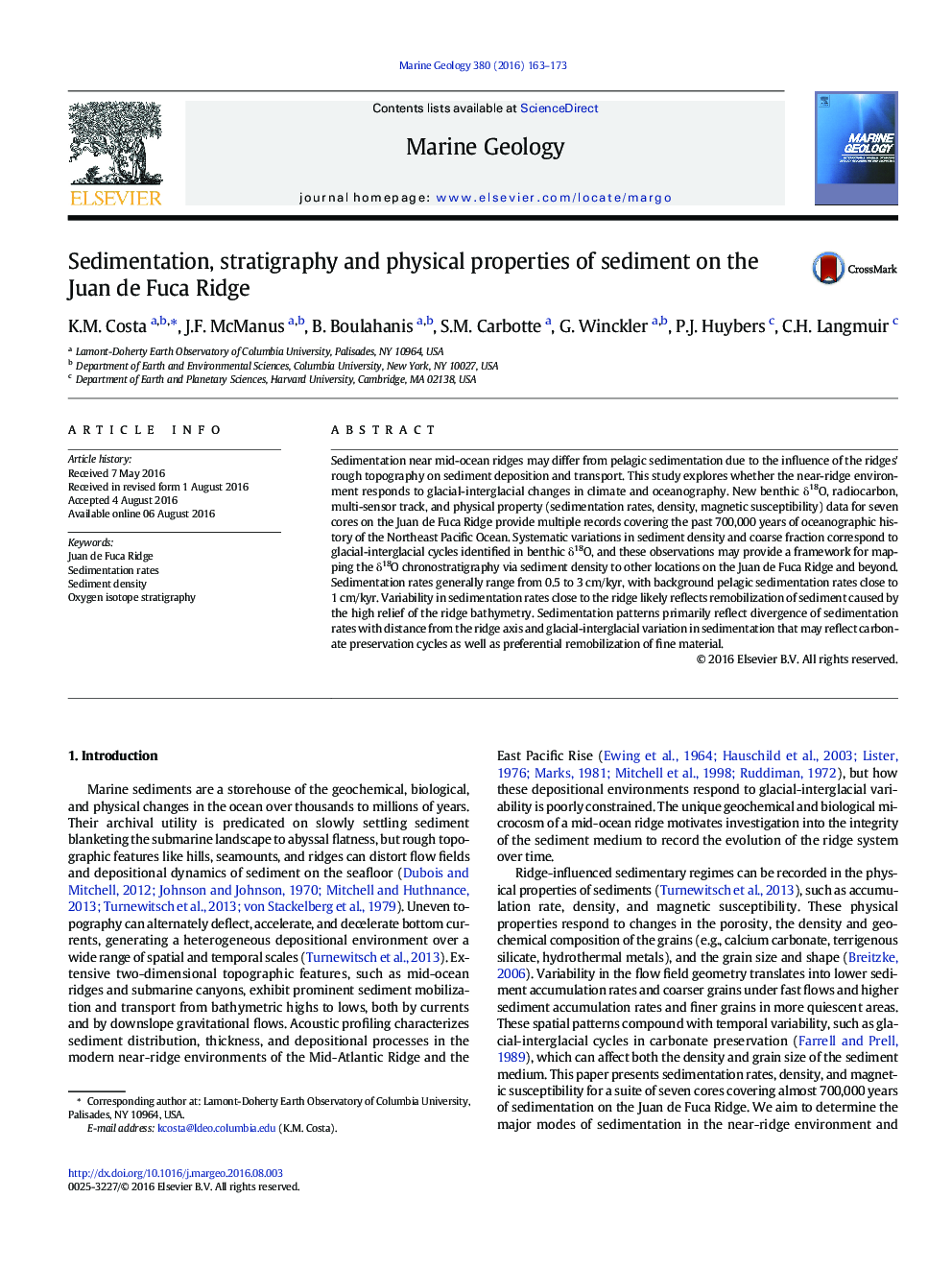| Article ID | Journal | Published Year | Pages | File Type |
|---|---|---|---|---|
| 6441295 | Marine Geology | 2016 | 11 Pages |
Abstract
Sedimentation near mid-ocean ridges may differ from pelagic sedimentation due to the influence of the ridges' rough topography on sediment deposition and transport. This study explores whether the near-ridge environment responds to glacial-interglacial changes in climate and oceanography. New benthic δ18O, radiocarbon, multi-sensor track, and physical property (sedimentation rates, density, magnetic susceptibility) data for seven cores on the Juan de Fuca Ridge provide multiple records covering the past 700,000 years of oceanographic history of the Northeast Pacific Ocean. Systematic variations in sediment density and coarse fraction correspond to glacial-interglacial cycles identified in benthic δ18O, and these observations may provide a framework for mapping the δ18O chronostratigraphy via sediment density to other locations on the Juan de Fuca Ridge and beyond. Sedimentation rates generally range from 0.5 to 3 cm/kyr, with background pelagic sedimentation rates close to 1 cm/kyr. Variability in sedimentation rates close to the ridge likely reflects remobilization of sediment caused by the high relief of the ridge bathymetry. Sedimentation patterns primarily reflect divergence of sedimentation rates with distance from the ridge axis and glacial-interglacial variation in sedimentation that may reflect carbonate preservation cycles as well as preferential remobilization of fine material.
Related Topics
Physical Sciences and Engineering
Earth and Planetary Sciences
Geochemistry and Petrology
Authors
K.M. Costa, J.F. McManus, B. Boulahanis, S.M. Carbotte, G. Winckler, P.J. Huybers, C.H. Langmuir,
